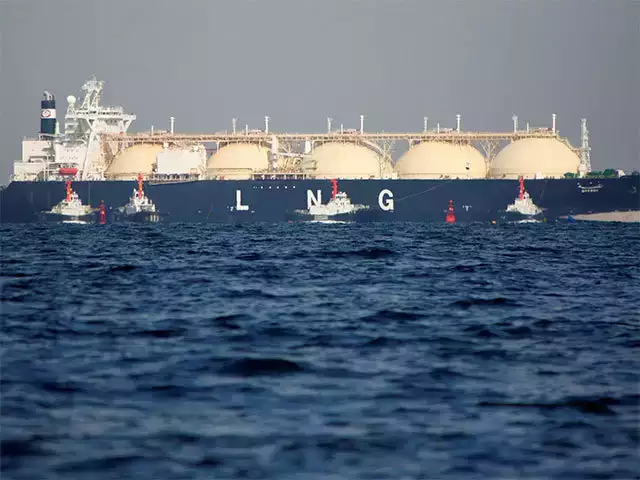
The Iran and Israel conflict has intensified in recent days. Iran initiated drone and rocket assaults on Israel, to which Israel responded by launching a missile. Crude oil prices have remained around $90 per barrel since the conflict.
In a note, Motilal Oswal Financial Services said that while de-escalation efforts are expected to manage the crisis, oil and LNG prices may increase if Iran fully or partially blocks the Strait of Hormuz.
The Strait of Hormuz is a narrow sea passage between Oman and Iran. It is approximately 40 km wide at the narrowest point, with 2 km of navigable channels for incoming and outgoing ships. It serves as the primary route for the export of crude oil by Saudi Arabia (6.3 million barrels per day), the UAE, Kuwait, Qatar, Iraq (3.3 million bpd) and Iran (1.3 million bpd).
Oil flow through the Strait amounted to 21 million barrels per day or 21% of global oil consumption in 2022. Additionally, roughly 20% of global LNG trade passes through it, encompassing nearly all LNG exports from Qatar and the UAE.
Unlike oil, for which alternative routes through the 'Red Sea' exist, no alternative routes are accessible for liquefied natural gas, the brokerage said.
India, which relies on overseas suppliers for over 85% of its crude oil requirements, imports oil from Saudi, Iraq and UAE as well as liquefied natural gas (LNG) from Qatar through the Strait of Hormuz.
In the event of a blockade of the Strait, "we expect significantly higher crude oil prices, refining margins, and spot LNG prices," Motilal Oswal said.
Although alternative routes are available, they might only have the capacity to handle a portion (approximately 7-8 million bpd of crude oil/refined products) of the current volume transiting through the Strait (21 million bpd), and this would also incur higher freight expenses.
"While investors focus on oil, we believe that spot LNG prices will witness even sharper escalation if the Strait of Hormuz is closed due to the absence of alternative routes," it said.
Saudi Arabia and the UAE possess alternative channels for exporting goods that bypass the Strait. The IEA reports that Saudi Arabia operates the East-West pipeline, capable of handling 7 million barrels per day. Nevertheless, this pipeline extends into the Red Sea, where there have already been interruptions in traffic flow due to assaults by Houthi rebels.
The UAE's onshore oil fields are connected to the Fujairah export terminal, which can handle 1.5 million barrels per day. Nonetheless, the IEA notes that currently, 30-40% of this capacity is in use.
In a report dated April 15, Moody's Analytics highlighted that the rise in tensions in the Middle East presents a notable danger to economies in the Asia-Pacific region. "The key risk comes from higher oil prices," they said.
According to the report, the surge in oil prices could disrupt the region's unstable inflation trajectory. "Most Asia-Pacific economies are net oil importers, leaving them vulnerable to global oil spikes. Impacts vary across countries, but broadly there are three main challenges from rising oil prices.
"First, they add to inflation through higher energy and fuel costs. Second, they add to the cost of production and overall transport costs, lifting prices on everything from food to flip-flops. The risk of higher food costs, via higher fertilizer, transport and seed costs, is especially worrisome because in much of Asia, it is stubbornly high food price inflation that keeps top-line consumer price indexes from retreating to central bank target ranges."
Higher oil prices' have the potential to 'push up inflation expectations', which in turn can 'make the job of central banks even harder, Moody's said.
According to Hardik Shah, Director at CareEdge Ratings, there has been a consistent rise in crude prices since the beginning of the 2024 calendar year. He warned, '"In case the situation worsens between Israel and Iran, it may lead to a spike in crude prices."
"However, India still has a decent share of supply of Russian crude which comprises 30% of India's total imports by end FY24, and it should help to keep India's import bills for crude oil under check," he said.
Disclaimer: The copyright of this article belongs to the original author. Reposting this article is solely for the purpose of information dissemination and does not constitute any investment advice. If there is any infringement, please contact us immediately. We will make corrections or deletions as necessary. Thank you.





